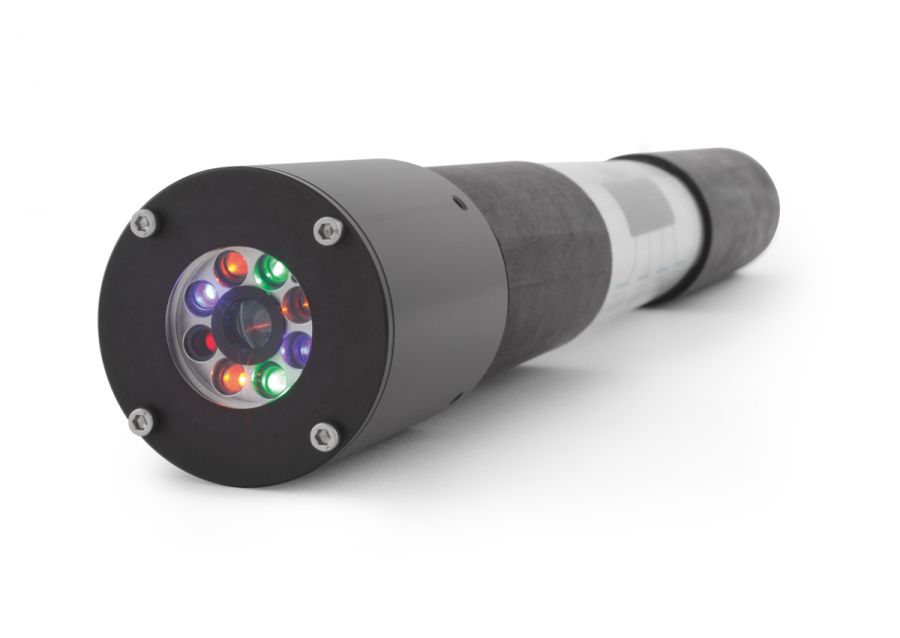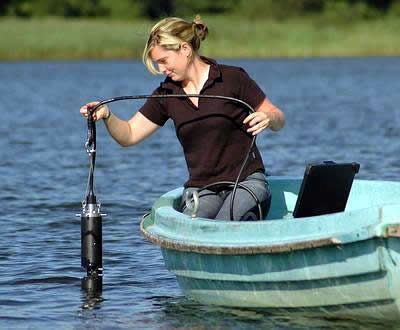Algae Detection Case Study Summary
All clear in lake Twiste
Intro:
A short article from Germany about inland bathing waters and the future uses of the Algae torch for monitoring.
FluoroProbe - a new tool in algal differentiation - by Martin Beutler
Abstract:
The 'spectral groups' of algae (green, blue, brown, mixed) are each characterised by a specific composition of photosynthetic pigments (particularly relevant are: Chl a, phycocyanobilin, phycoerythrobilin, fucoxanthin, peridinin) and, consequently, by a specific excitation spectrum of the Chl fluorescence. The newly-developed probe is a submersible fluorometer which measures the emission intensity for excitation in five characteristic wavelength ranges employing pulsed light-emitting diodes. The submersible probe transfers all data on-line to a personal computer or stores them in the probe (fluorescence data plus the simultaneously measured water pressure for depth determination).
The five-point excitation spectra (5 wavelength ranges) are deconvoluted on the basis of norm spectra which have been obtained by analysis of several species of each spectral group. This enables an estimation of the mean deviation of the norm spectra. By means of the deconvolution approach, for each spectral algal group an estimate of the corresponding Chl a concentration is obtained (µg of Chl a L-1 per spectral algal group in the measuring volume at the given depth).
Differentiation of algae by bbe FluoroProbe, bbe Online - fluorometer, bbe Cuvette-Fluorometer, D Lohse,
Summary:
Due to the fact that algae of the same division contain a similar quantity and quality of photosynthetic pigments their fluorescence excitation (with a fixed emission wavelength at 680nm) spectrum is significant for each division. So it is possible to distinguish divisions of algae by their fluorescence excitation spectrum.
Leboulange Paper
Abstract:
A bbe-Moldaenke FluoroProbe was configured and used to survey the vertical distribution of the deep-living toxic and filamentous cyanobacterium Planktothrix (Oscillatoria) rubescens among the autochthonous algal communities in Lake Bourget, France. This in situ measuring spectrofluorometer, which can be used to perform chlorophyll analysis and integrated algal class determination, provides a realistic estimation of the abundance and dynamics of the cyanobacterial population that is known to produce the hepatotoxic heptapeptides microcystin RR and LR.
Data provided from in-line measurements using the probe and from P. rubescens cell counts obtained by discrete sampling were closely correlated (r = 0.899, p < 0.01), as were in-line data and spectrophotometric total chlorophyll a measurements (r = 0.775, p < 0.01). A survey conducted from December 1999 to May 2001 revealed that P. rubescens exhibits a deep maximum level (typically between 10 and 15 m) in spring and summer (reaching concentrations of up to 20 µg equivalent chl a l –1 , i.e. 27 000 cells ml –1 ), whereas it spreads from the surface either to the top of the thermocline or to the bottom of the lake, in autumn and winter respectively. We propose that the probe could be used as a powerful tool for assaying the occurrence and dynamics of microalgal blooms, typically toxic cyanobacteria, that call for accurate and rapid monitoring to assess the health of the ecosystem and to alert the authorities about potential risks regarding pumping and use of the lake water for drinking-water production purposes.



